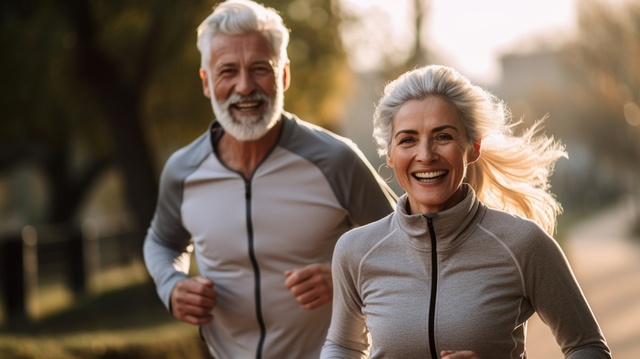In a world where staying active is key to maintaining a vibrant and healthy lifestyle, finding the right senior exercise routines can be transformative. Imagine waking up each day with renewed energy, feeling stronger, more flexible, and ready to tackle whatever comes your way.
Exercise is not just about keeping fit; it is about enhancing your overall well-being, boosting your mood, and even forging new social connections. Whether you are a seasoned fitness enthusiast or just starting out, this guide will unveil the most effective and enjoyable senior exercise routines to keep you sprightly.
Why Senior Exercises are Important
Regular physical activity gives a vast range of advantages to older people. Here are some of the key reasons why senior exercises at home or outdoors are so important:
As you age gracefully, the body undergo changes that can sometimes slow you down, but the good news is, senior exercise routines are more important—and more beneficial—than ever.
Picture yourself maintaining the freedom to move with ease, enjoying activities you love without hesitation, and feeling confident in your strength and balance. Regular exercise is the key to achieving this vibrant lifestyle. It helps:
Maintain muscle strength/flexibility and Bone density: The effects of aging become clearer as the amount of muscle mass and strength in the body naturally decreases along with bone density.
Both are key to preventing falls and fractures, Exercising is an important element for avoiding this decline and enhancing flexibility to help you perform everyday tasks more easily without fear of falling.
Improve cardiovascular health: Regular exercising is the best way to strengthen the heart and improve circulation. Therefore, the chance of heart disease, stroke and high blood pressure are substantially lowered.
Lower the risk of chronic diseases: Engaging in senior exercise routines can ward off chronic conditions like arthritis, diabetes, and hypertension, ensuring that you stay active and independent for longer.
Improves mental health: Physical exercise enables secrete endorphins which may be helpful in combating stress, improving mood and promoting quality sleep. Furthermore, exercise has been proven effective in slowing down cognitive decline and minimizing the chances of developing dementia.
It can alleviate symptoms of anxiety and depression, improve sleep quality, and even enhance cognitive function, keeping your mind sharp and engaged.
Enhance balance and coordination: Certain exercises that concentrate on the safe and efficient transfer of weight from one leg to another might make a senior safer from falls, which are a common cause of injuries.
Promote social interaction: When you join group exercise classes, you will definitely meet new people that you would not meet under normal circumstances, and this can help alleviate feelings of loneliness or isolation.
So, whether you are dancing, swimming, or doing gentle yoga, remember that every movement counts. Embrace the joy of staying active, and you’ll find that age is just a number, not a limitation.
How to Get Started
There is a deluge of senior exercise routines. The problem is that this can get very confusing for a senior starting out on targeted exercising. For seniors, there are at least 8 exercise routines you can do at home. Once you understand what these 8 routines are, then you can select your targeted areas, and then look for 1-2 exercises from each area to get started.
8 Senior Exercise Routines at Home
Though there are gyms which have different options for exercise, many seniors still prefer to exercise in a place where they can feel at home. Here are some great ideas of low impact exercise for seniors that can be done at home with minimal equipment:
Aerobic Exercises: Aerobic exercises are activities that increase heart rate and breathing, improving cardiovascular health, endurance, and overall fitness. Walking is the simplest aerobic exercise that can either be done inside or outside the house.
Chair exercises: Chair exercises are a perfect choice for the elderly who have restricted mobility or unstable balance. There are several of these senior exercises for balance using a chair as a prop for safety.
Stretching routines: Seniors should try to keep their agility. By doing some simple stretching exercises, you will be able to increase your motion range and avoid muscle tightness. It is beneficial to work on stretching major muscle groups, including shoulders, chest, hips, back and legs.
Balance exercises: Improving balance is important for reducing the risk of falls.
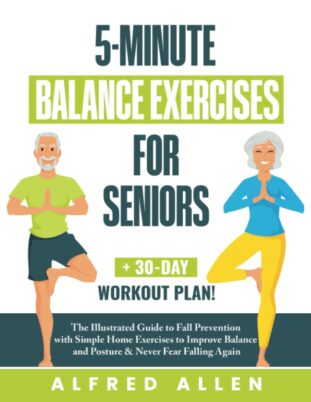
Resistance band workouts: Resistance bands are versatile, inexpensive, and easy to use at home. They can be used to strengthen muscles in the arms, legs, and core. Some examples include seated rows, leg presses, and lateral arm raises.
Gentle Yoga: Gentle yoga is a slow, mindful practice focusing on relaxation, flexibility, and light strength through simple poses and breathing techniques.
Tai Chi: Tai Chi is a slow, flowing martial art that enhances balance, flexibility, and mental focus through gentle, coordinated movements.
Pelvic Tilts: Pelvic tilts are exercises that strengthen the lower back and core by flattening the lower back against the floor and relaxing.
Senior Exercises at Home
Staying active at home is both convenient and effective, especially for seniors looking to maintain their health and vitality. Here are some of the best senior exercises you can easily do at home:
1. Aerobic Exercises – Low Impact Exercise for Seniors
Boost your cardiovascular health with low-impact aerobics:
a. Walking – Simple but powerful, walking around your home or yard is a great way to keep your heart healthy and your muscles active. If space is limited, marching in place works too for a set amount of time.
b. Dancing: Put on some music and dance around your living room.
c. Step Touches: Step to the side, touch your other foot to it, and then repeat on the other side.
2. Chair Exercises
Such exercises may include walking in place, legs lift, circles in arms and shrugs in shoulders.Using a sturdy chair, you can perform various exercises to improve strength and flexibility:
- Seated Leg Lifts: Sit straight, lift one leg and hold for a few seconds, then switch.
- Chair Squats: Stand up from a seated position without using your hands, then sit back down slowly.
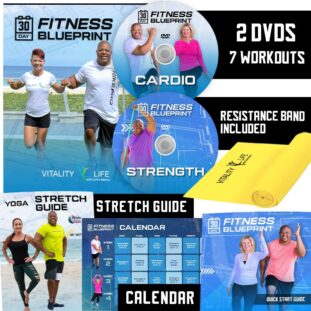
3. Stretching
Keeping muscles flexible is crucial for preventing injuries and maintaining mobility:
- Neck Stretch: Gently tilt your head towards one shoulder, hold, and then switch sides.
- Hamstring Stretch: Sit on the edge of a chair, extend one leg out straight, and reach towards your toes.
4. Balance Exercises
Improving balance can prevent falls:Some simple balance exercises include single-leg stands, heel-to-toe walks, and side-leg raises. Be sure to have a sturdy chair or wall nearby for support if needed.
- Heel-to-Toe Walk: Walk in a straight line, placing the heel of one foot directly in front of the toes of the other.
- Single-Leg Stands: Hold onto a chair for support and lift one leg, balancing on the other foot.
5. Strength Training
Preserving muscle mass and bone density in seniors not only avoids falls but also improves balance and metabolism. One of the viable ways to achieve these goals is by doing strength training exercises with light weights, resistance bands, or simply using your own body weight.
It is very important to begin with lighter weights and correct form in order to avoid injury, build up resistance, and improve strength.
Building muscle can improve overall strength and stamina:Some examples include seated rows, leg presses, and lateral arm raises.
- Wall Push-Ups: Stand a few feet from a wall, place your hands on the wall, and perform push-ups.
- Resistance Band Exercises: Use resistance bands for bicep curls, shoulder presses, and leg extensions.
6. Gentle Yoga
Yoga can enhance flexibility, balance, and relaxation:
- Cat-Cow Stretch: On all fours, alternate between arching your back (cat) and dipping it (cow).
- Child’s Pose: Kneel on the floor, sit back on your heels, and stretch your arms forward.
7. Tai Chi
This ancient practice improves balance, flexibility, and mental focus through slow, deliberate movements.
8. Pelvic Tilts
Strengthen your lower back and core:
- Lie on your back with knees bent and feet flat. Tighten your abdominal muscles and flatten your back against the floor, then release.
By incorporating these exercises into your daily routine, you can enjoy the many benefits of staying active right from the comfort of your home.
Always remember to consult with your healthcare provider before starting any new exercise program to ensure it’s safe for your specific health conditions.
10 Best Core Exercises for Seniors
Maintaining a strong core is essential for seniors as it enhances stability, balance, and overall strength, reducing the risk of falls and improving daily function. Here are some of the best core exercises for seniors that are safe and effective:
1. Seated Knee Lifts
This exercise can be done while sitting in a sturdy chair.
- How to do it: Sit up straight with your feet flat on the floor. Lift one knee towards your chest, hold for a few seconds, then lower it back down. Repeat with the other leg.
2. Pelvic Tilts
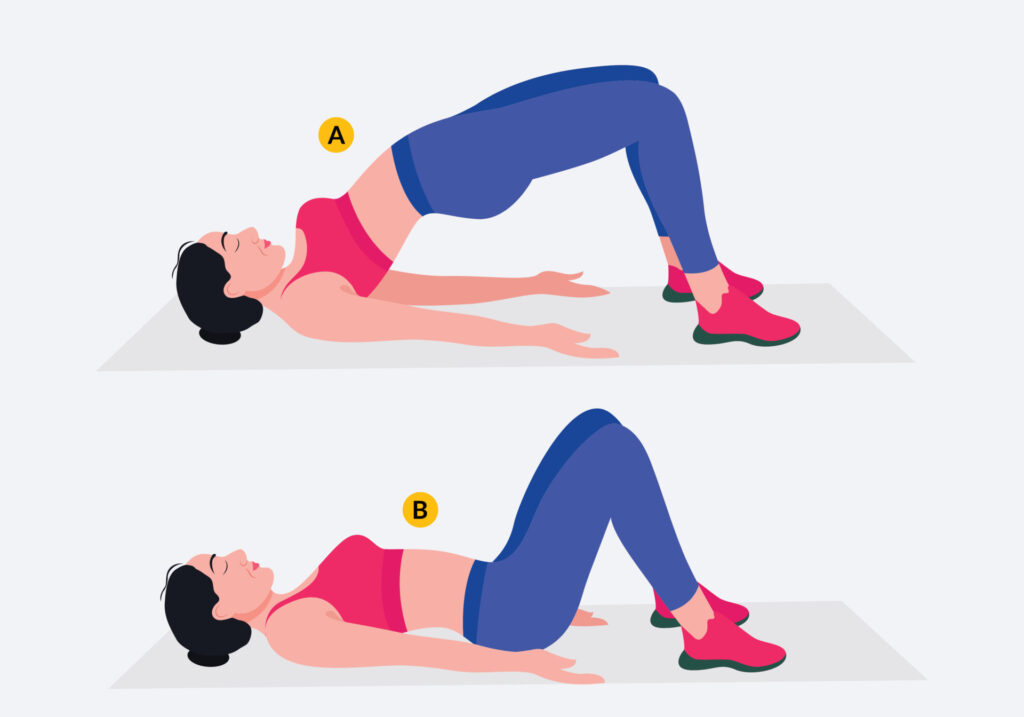
Pelvic tilts strengthen the lower back and abdominal muscles.
- How to do it: Lie on your back with your knees bent and feet flat on the floor. Tighten your abdominal muscles and press your lower back into the floor, then relax. Repeat several times.
3. Bird Dog
This exercise improves balance and strengthens the core.
- How to do it: Start on all fours with your hands directly under your shoulders and knees under your hips. Extend one arm forward and the opposite leg back, keeping your back straight. Hold for a few seconds, then return to the starting position and switch sides.
4. Bridge
The bridge exercise targets the glutes and lower back.
- How to do it: Lie on your back with your knees bent and feet flat on the floor. Lift your hips towards the ceiling, squeezing your glutes, and hold for a few seconds before lowering back down.
5. Toe Taps
Toe taps engage the lower abdominal muscles.
- How to do it: Lie on your back with your legs lifted and knees bent at a 90-degree angle. Lower one foot to tap the floor, then return to the starting position and switch legs.
6. Standing Side Bends
This exercise strengthens the obliques and improves flexibility.
- How to do it: Stand with your feet shoulder-width apart and hands on your hips. Slowly bend to one side, reaching your hand down your leg, then return to the starting position and repeat on the other side.
7. Modified Plank
A modified plank helps build core strength without putting too much strain on the wrists or shoulders.
- How to do it: Start on all fours, then lower your forearms to the floor. Step your feet back slightly to form a straight line from your head to your knees. Hold this position, keeping your abdominal muscles tight.
8. Leg Raises
Leg raises focus on the lower abdominal muscles.
- How to do it: Lie on your back with your legs straight. Lift one leg towards the ceiling, keeping it straight, then lower it back down without touching the floor. Repeat with the other leg.
9. Heel Slides
Heel slides engage the core and lower abdominal muscles.
- How to do it: Lie on your back with your knees bent and feet flat on the floor. Slide one heel away from your body, keeping it in contact with the floor, then slide it back to the starting position. Repeat with the other leg.
10. Seated Russian Twists
This exercise targets the oblique muscles.
- How to do it: Sit on the floor with your knees bent and feet flat. Lean back slightly and clasp your hands together. Twist your torso to the right, then to the left, keeping your core engaged.
Before starting any new exercise routine, it is important for you to consult with your healthcare provider to ensure the exercises are safe for your individual health conditions. With regular practice, these core exercises can significantly improve stability, strength, and overall well-being.
12 Senior Exercise Routines for Balance
Maintaining good balance is crucial for seniors to prevent falls and maintain independence. Here are some effective and safe senior exercises for balance that can be done at home:
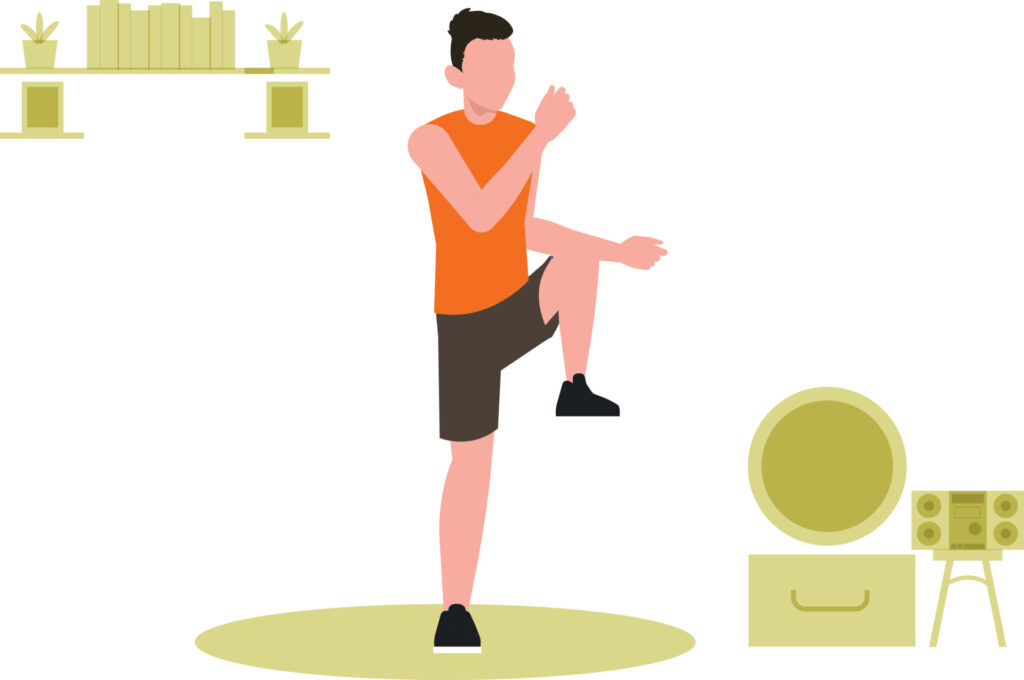
1. Heel-to-Toe Walk
This exercise helps improve balance and coordination.
- How to do it: Walk in a straight line, placing the heel of one foot directly in front of the toes of the other foot. Keep your eyes forward and arms out to the sides for balance. Take slow, deliberate steps.
2. Single-Leg Stands
Standing on one leg strengthens the muscles that support balance.
- How to do it: Stand behind a sturdy chair and hold onto it for support. Lift one leg off the ground, bending the knee slightly, and hold the position for 10-15 seconds. Switch legs and repeat. As you progress, try to hold the chair with just one hand or no hands at all.
3. Toe Lifts
This exercise strengthens the lower legs and improves balance.
- How to do it: Stand with your feet hip-width apart and hold onto the back of a chair for support. Slowly lift your heels off the ground, rising onto your toes, then lower back down. Repeat 10-15 times.
4. Side Leg Raises
Strengthen the hips and improve balance with side leg raises.
- How to do it: Stand behind a chair and hold onto it for balance. Lift one leg out to the side, keeping it straight. Hold for a few seconds, then lower it back down. Repeat 10-15 times on each side.
5. Marching in Place
Marching helps improve balance and coordination.
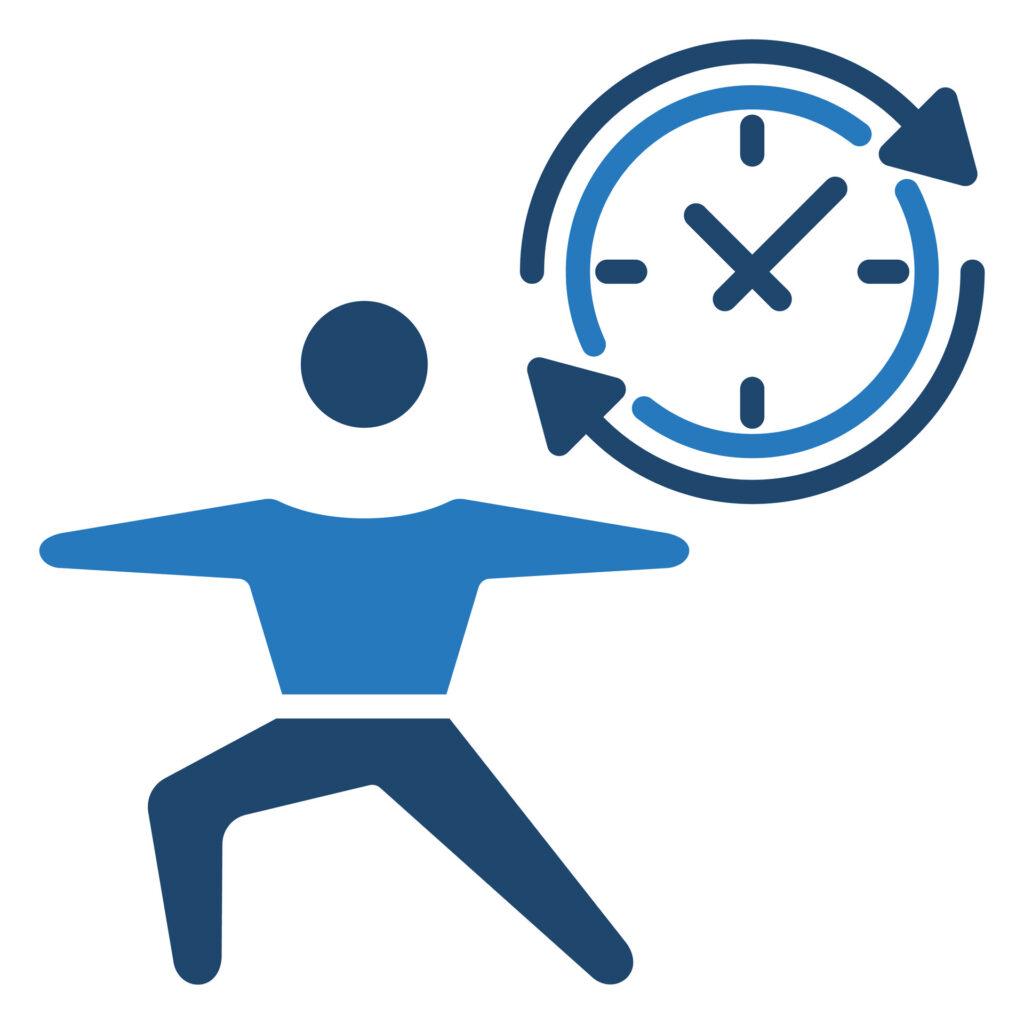
- How to do it: Stand with your feet hip-width apart. Lift your knees high, one at a time, as if you are marching. Swing your arms in rhythm with your legs. Continue for 1-2 minutes.
6. Balance Walk
This exercise improves balance and focus.
- How to do it: Walk in a straight line, lifting your knees and pausing for a moment with each step before placing your foot down. Try to maintain a steady pace and keep your gaze forward.
7. Chair Stand
Standing up from a seated position strengthens the legs and improves balance.
- How to do it: Sit on a sturdy chair with your feet flat on the floor. Cross your arms over your chest. Lean forward slightly and stand up without using your hands. Sit back down slowly and repeat 10-15 times.
8. Tandem Stance
This exercise improves static balance.
- How to do it: Stand with one foot directly in front of the other, heel to toe, as if standing on a tightrope. Hold this position for 10-30 seconds, then switch feet and repeat.
9. Clock Reach
Enhances balance and coordination.
- How to do it: Imagine you are standing in the center of a clock. Extend one arm straight out at 12 o’clock. Move it to 3 o’clock, 6 o’clock, and 9 o’clock, while lifting the opposite leg slightly for balance. Repeat with the other arm.
10. Tai Chi
Tai Chi involves slow, deliberate movements that enhance balance, flexibility, and focus.
- How to do it: Follow a beginner’s Tai Chi routine through a class, DVD, or online video, focusing on maintaining a steady, controlled movement and deep breathing.
11. Yoga
Certain yoga poses are excellent for improving balance.
- How to do it: Practice simple poses like Tree Pose, where you stand on one leg and place the other foot against your inner thigh or calf, holding your hands together in front of your chest or above your head.
12. Standing Calf Raises
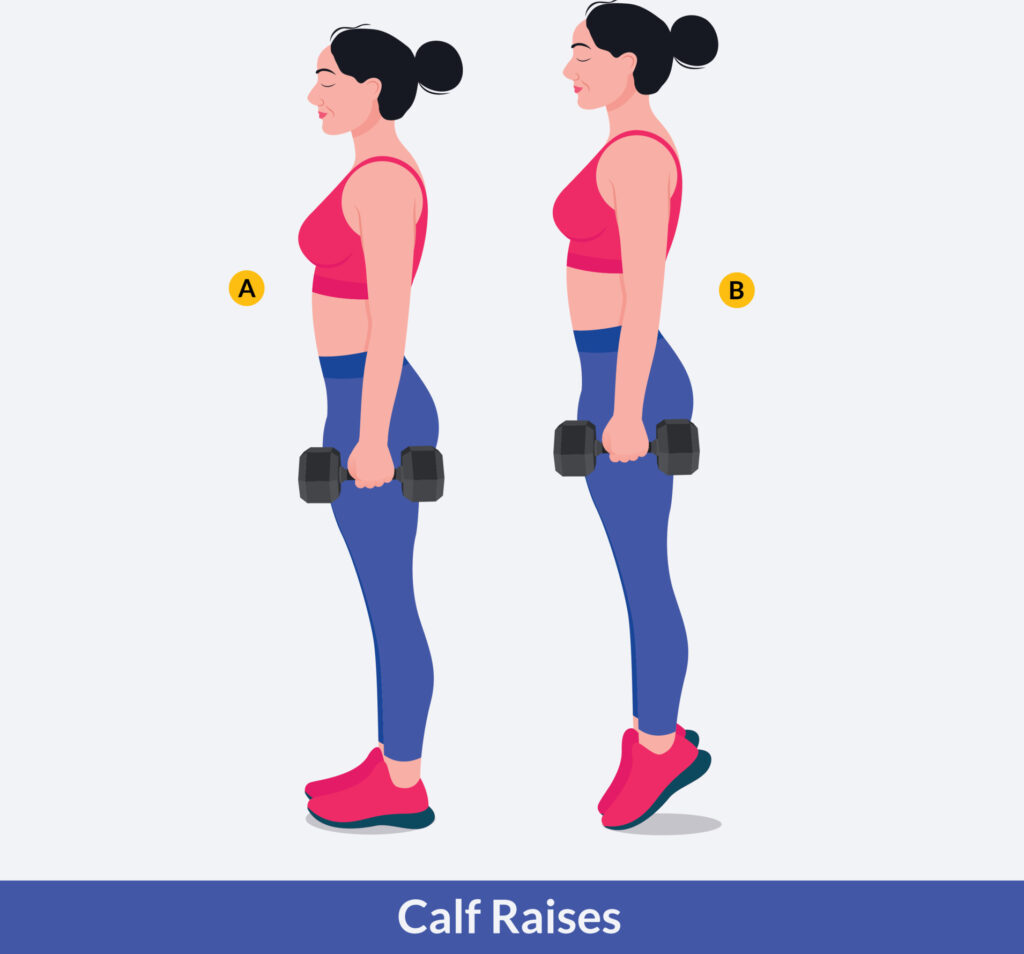
Strengthen your calves and improve balance. There are variations of this exercise, but the preferred method for seniors and the elderly is to stand behind a chair for the exercises.
- How to do it: Stand behind a chair and hold onto it for support. Raise your heels off the ground as high as possible, then slowly lower them back down. Repeat 10-15 times.
These exercises can be done a few times a week to help improve balance and stability. Always ensure you have a stable support nearby, such as a chair or countertop, to hold onto if needed.
If you are new to exercise or have any health concerns, consult with your healthcare provider before starting a new exercise routine.
Staying Motivated and Consistent
It is sometimes hard to keep to a regular workout routine. However, seniors can use several strategies that will make them motivated and consistent:
- Set realistic goals. Begin with easy-to-reach targets and build up until the ambitious ones are conquered. Celebrate small victories as you go along for motivation.
- Find an exercise buddy to create accountability and support and make the process easier.
- Mixing different types of workouts and activities helps avoid monotony and keep training fun.
- Schedule exercise time prevents it from being a forgotten chore.
- Track progress and improvements in a log.
Conclusion – Senior Exercise Routines
There are a multitude of senior exercises at home that can be performed in the home environment for seniors and the elderly state enabling them to be physically active, keep the body and mind intact, and remain healthy.
Aerobic exercises that involve a combination of strength training, balance activities, and stretching can be deemed as the best way to stay healthy, diminish the risk of chronic diseases and maintain a quality lifestyle in senior citizens.
Related Articles
FAQ
What are the best senior exercises?
The best senior exercises include walking, gentle yoga, swimming, and strength training with resistance bands. These activities improve balance, flexibility, strength, and cardiovascular health, promoting overall well-being and independence in daily life. Always consult with a healthcare provider before starting any new exercise routine.

